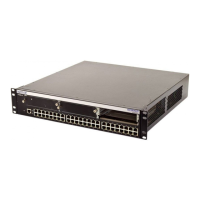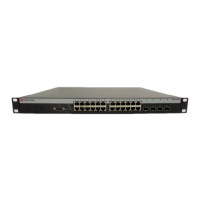Typographical and Keystroke Conventions
xviii Matrix E1 Series (1G694-13) Configuration Guide
TYPOGRAPHICAL AND KEYSTROKE CONVENTIONS
bold type Bold type indicates required user input, including command keywords,
that must be entered as shown for the command to execute.
RETURN Indicates either the ENTER or RETURN key, depending on your
keyboard.
ESC Indicates the keyboard Escape key.
SPACE bar Indicates the keyboard space bar key.
BACKSPACE Indicates the keyboard backspace key.
arrow keys Refers to the four keyboard arrow keys.
[-] Indicates the keyboard dash key.
DEL Indicates the keyboard delete key.
italic type When used in general text, italic type indicates complete document titles.
When used in CLI command syntax, italic type indicates a user-supplied
parameter, either required or optional, to be entered after the command
keyword(s).
n.nn A period in numerals signals the decimal point indicator (e.g., 1.75 equals
one and three fourths). Or, periods used in numerals signal the decimal
point in Dotted Decimal Notation (DDN) (e.g., 000.000.000.000 in an IP
address).
x A lowercase italic x indicates the generic use of a letter (e.g., xxx indicates
any combination of three alphabetic characters).
n A lowercase italic n indicates the generic use of a number (e.g., 19nn
indicates a four-digit number in which the last two digits are unknown).
[ ] Square brackets indicate optional parameters.
{ } Braces indicate required parameters. One or more parameters must be
entered.
| A bar indicates a choice in parameters.
[{ | }] Braces and vertical bars within square brackets indicate a required choice
within an optional element. You do not need to select one. If you do, you have
some required choices.

